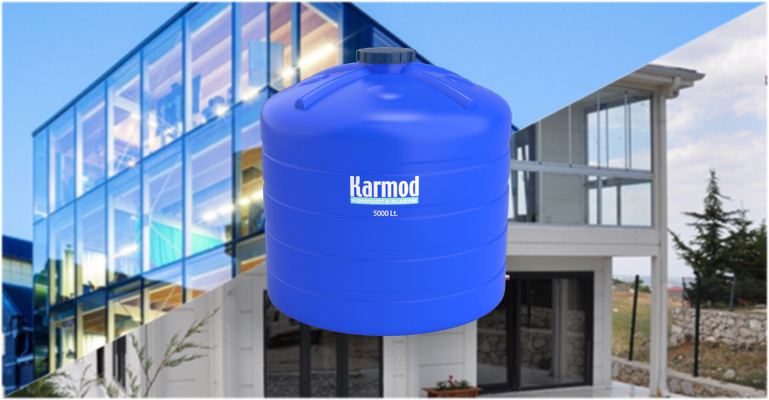
These tanks are being used in various areas around us. They can be employed for a multitude of purposes, from industrial facilities and workplaces to residential settings. In industrial contexts, water tank models are mainly utilized for safeguarding content produced on production lines from external factors and for transporting the manufactured materials. In other applications, they are used for purposes like septic systems and rainwater collection.
Looking at their general purpose, water tanks, irrespective of their application area, serve as means to store and protect food or chemical contents, facilitate their transportation if required, and enable their easy discharge and use when needed. They represent tools that preserve contents from external environmental conditions, assist in transportation, and ensure contents are readily available when demanded.
Making the most suitable choice of a tank for a property can prove challenging for individuals seeking to purchase one. To select the most compatible tank in line with your property, you can follow the steps below.
-
Calculate the Required Size
When the need arises for a storage unit, the first step is to calculate the required size. The key objective is to transform your requirement from an abstract notion into a concrete measurement. In doing so, you can uncover certain overlooked aspects once you translate it into tangible terms. Remember to account for the turnover volume of the tank during this process.
-
Decide on Above Ground or Underground Placement
Tanks can be installed both above ground and underground. If needs like setting up a septic system or a rainwater collection system arise, underground tanks are preferable. On the other hand, above-ground tanks are favored for situations like pest control and irrigation. However, even for such requirements, underground tanks can still be a viable option. Underground tanks can be interconnected, allowing flexibility in choosing the desired volume.
-
Determine the Desired Design
Different tank designs are available across the spectrum. Vertical and horizontal designs are commonly favored. Horizontal tanks are commonly chosen for mobile vehicles like trucks, yachts, and caravans. Vertical tanks, due to their stacking capacity, are predominantly used in residential settings. They take up minimal space, depending on their volume.
-
Identify the Materials for Tank Production
Tanks are manufactured using three main materials: polyethylene, polyester, and stainless steel. These materials are highly suitable for tank production. Among them, plastic water tank models are well-suited for food storage, whereas polyester tanks excel in chemical storage. Polyethylene tanks are produced as monoblock units using linear low-density polyethylene, while polyester tanks are manufactured by bonding polyester resin and glass fiber using specialized adhesives. Stainless steel tanks, formed by welding chromium and nickel infused AISI steel using argon gas, exhibit exceptional durability.
How Are Water Tanks Manufactured?
Polyethylene tanks are produced in state-of-the-art manufacturing facilities as monoblock, or in other words, as single-piece structures. Other tanks are manufactured by adhering or welding components together. This feature enables on-site assembly of these tanks. All tanks adhere to predefined durability standards. Stainless steel tanks additionally feature stainless steel legs and ladders. In other tanks, legs are present, primarily in horizontal models.
What Are the Advantages of These Tanks?
These tanks offer numerous advantages to their users. Among these, the most prominent is the international recognition of the food-safe quality of polyethylene tanks. Consequently, many products that encounter with foods are made from polyethylene. Furthermore, all tanks exhibit high resistance to ultraviolet rays, preventing the ingress of harmful radiation into the tank and thereby fostering a healthier environment. Polyester tanks, due to their high chemical resistance, can store a variety of chemicals. Stainless steel tanks, with their operating temperature close to the boiling point, eliminate concerns about the stored content's temperature. Stainless steel tanks can operate at temperatures up to +80 degrees Celsius. If you're seeking a more budget-friendly solution for your property, polyethylene tanks are the definite choice.
In this article, we've provided you with information about tanks suitable for use on your property. Naturally, there is more to these tanks than what we've discussed here. For any other questions lingering in your mind, feel free to engage with our customer representatives, who can assist you in finding the most suitable tank for your needs.


 EN
EN
 DE
DE
 FR
FR
 IT
IT
 ES
ES
 PT
PT
 RU
RU
 AR
AR
 BG
BG
 SR
SR
 GR
GR
 SQ
SQ
 RO
RO
 PL
PL
 HU
HU
 CZ
CZ
 HR
HR
 AZ
AZ
 GE
GE
 AM
AM
 IL
IL